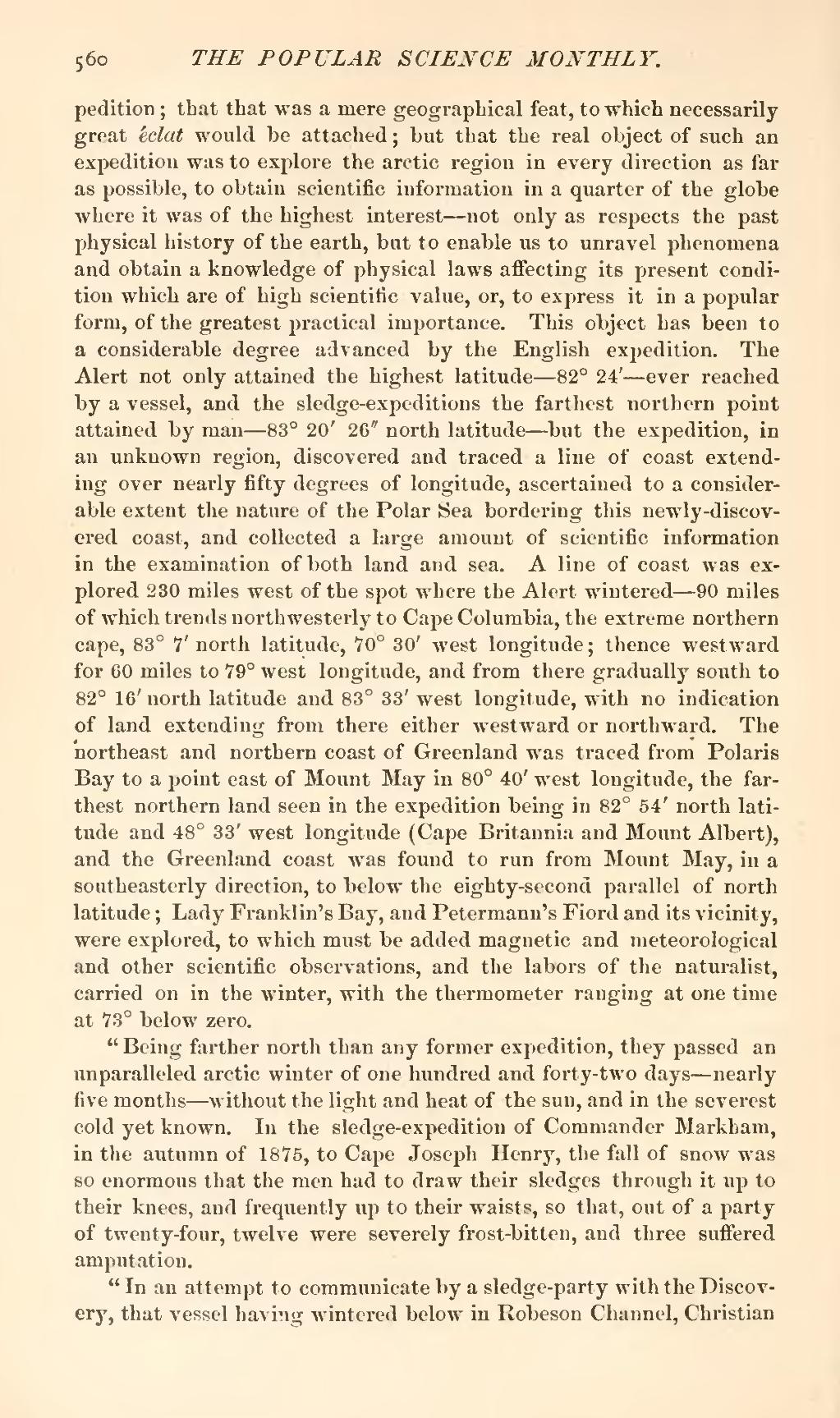pedition; that that was a mere geographical feat, to which necessarily great éclat would be attached; but that the real object of such an expedition was to explore the arctic region in every direction as far as possible, to obtain scientific information in a quarter of the globe where it was of the highest interest—not only as respects the past physical history of the earth, but to enable us to unravel phenomena and obtain a knowledge of physical laws affecting its present condition which are of high scientific value, or, to express it in a popular form, of the greatest practical importance. This object has been to a considerable degree advanced by the English expedition. The Alert not only attained the highest latitude—82° 24'—ever reached by a vessel, and the sledge-expeditions the farthest northern point attained by man—83° 20' 26" north latitude—but the expedition, in an unknown region, discovered and traced a line of coast extending over nearly fifty degrees of longitude, ascertained to a considerable extent the nature of the Polar Sea bordering this newly-discovered coast, and collected a large amount of scientific information in the examination of both land and sea. A line of coast was explored 230 miles west of the spot where the Alert wintered—90 miles of which trends northwesterly to Cape Columbia, the extreme northern cape, 83° 7' north latitude, 70° 30' west longitude; thence westward for 60 miles to 79° west longitude, and from there gradually south to 82° 16' north latitude and 83° 33' west longitude, with no indication of land extending from there either westward or northward. The northeast and northern coast of Greenland was traced from Polaris Bay to a point east of Mount May in 80° 40' west longitude, the farthest northern land seen in the expedition being in 82° 54' north latitude and 48° 33' west longitude (Cape Britannia and Mount Albert), and the Greenland coast was found to run from Mount May, in a southeasterly direction, to below the eighty-second parallel of north latitude; Lady Franklin's Bay, and Petermann's Fiord and its vicinity, were explored, to which must be added magnetic and meteorological and other scientific observations, and the labors of the naturalist, carried on in the winter, with the thermometer ranging at one time at 73° below zero.
"Being farther north than any former expedition, they passed an unparalleled arctic winter of one hundred and forty-two days—nearly five months—without the light and heat of the sun, and in the severest cold yet known. In the sledge-expedition of Commander Markham, in the autumn of 1875, to Cape Joseph Henry, the fall of snow was so enormous that the men had to draw their sledges through it up to their knees, and frequently up to their waists, so that, out of a party of twenty-four, twelve were severely frost-bitten, and three suffered amputation.
"In an attempt to communicate by a sledge-party with the Discovery, that vessel having wintered below in Robeson Channel, Christian
